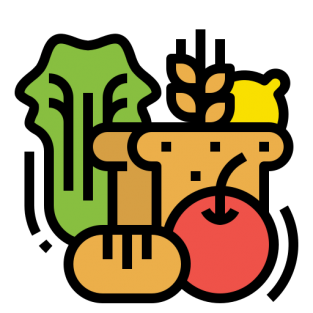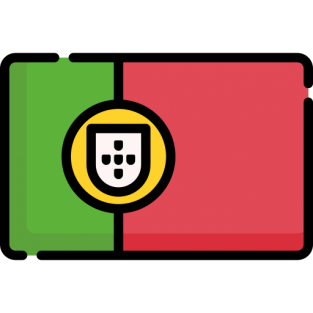Olá! Today you will learn important vocabulary (verbs, nouns, etc) related to cooking in Brazilian Portuguese. So you will learn verbs that will help you to understand recipes and even give recipes to your Brazilian friends. Ready to start learning?
Basic cooking vocabulary
Before we learn the actual verbs that we normally see in recipes descriptions, let’s learn (or review) some basic cooking words.
Here you have some verbs that are central to the cooking scenario:
Cozinhar (cook), Comer (eat), Fazer (make) e Provar/ Experimentar (taste).
Now let’s see some key nouns:
A comida (food) – Os ingredientes (ingredients) – A receita (recipe) – A panela (pan) – O forno (oven) – A tigela (bowl) – A geladeira (fridge) – A colher (spoon) – A faca (knife) – O garfo (fork) – A xícara (cup) – O prato (plate).
Meals:
It’s also very important to know how to say each meal of the day. Check below the name of the meal followed by the verbs we use with each of them.
- O Café da manhã – breakfast (verb: tomar café da manhã – to have breakfast)
- O Almoço – lunch (verb: almoçar – to have lunch)
- O Lanche – snack (verb: lanchar – to have a snack)
- O Jantar / a janta – dinner (verb: jantar – to have dinner)
Examples:
- Tomei café sem açúcar e comi uma torrada no café da manhã hoje (I had coffee without sugar and I ate a toast for breakfast today)
- O que nós vamos almoçar hoje? (What we are going to have for lunch today?)
- Eu lancho todo dia às quatro da tarde. (I have a snack every day in the afternoon.)
- Vamos comer comida tailandesa no jantar amanhã. (We are going to have thai food for dinner tomorrow)
Cooking verbs:
Acrescentar/adicionar – add
Assar – bake
Aquecer – heat
Bater – beat
Colocar – put
Cortar – cut
Derreter – melt
Descascar – peel
Despejar – pour
Fatiar – slice
Ferver – boil
Fritar – fry
Misturar – mix
Mexer – stir
Ralar – grate
Refogar – braise
Untar – grease
Congelar – freeze
Deixar esfriar – let it cool down
Esquentar – heat
Picar – chop
Preaquecer – preheat
Levar ao fogo – bring to stove/fire/heat
Escaldar – scald
Esperar – wait
Enrolar – roll
Levar ao forno – bring to oven
crescer – rise
dourar – brown
Receita de Pão de Queijo
Now, let’s read the text below that shows how to make pão de queijo and find the words learned above. Notice that the verbs are in the imperative mode.
Ingredientes:
2 xícaras (chá) de polvilho azedo
1 xícara (chá) de polvilho doce
1 ½ xícara (chá) de queijo meia-cura ralado grosso
3 ovos
1 ½ xícara (chá) de água
¼ de xícara (chá) de óleo
1 colher (chá) de sal
óleo a gosto para untar as mãos
- Preaqueça o forno a 200 ºC (temperatura média).
- Coloque a água e o óleo numa panela pequena e leve ao fogo médio para ferver. Enquanto isso, numa tigela grande, misture os polvilhos e o sal.
- Assim que a mistura de água e óleo ferver, despeje aos poucos sobre a mistura de polvilhos, para escaldar. Mexa bem com uma colher de pau, até incorporar todo o líquido. Espere a massa amornar.
- Adicione o queijo ralado e misture bem.
- Numa tigela pequena, quebre um ovo de cada vez e junte à massa. Misture vigorosamente a cada adição, para incorporar cada ovo totalmente, de preferência com a colher de pau. A massa não vai ficar lisa, não se assuste, é assim mesmo. A textura é um pouco mais rústica, com gruminhos de polvilho, e um pouco pegajosa. O importante é que todos os ingredientes estejam bem misturados, sem ficar parte líquida do ovo separada da massa.
- Coloque um pouco de óleo num pires para untar as mãos; com uma colher, retire uma porção da massa e enrole do tamanho de uma bola de golf (cerca de 6 cm de diâmetro). Se a sua mão começar a ficar com massa grudada, pare, lave a mão, e unte novamente.
- Leve ao forno para assar por cerca de 40 minutos, até crescer e dourar. Retire do forno e sirva a seguir.
For more recipes to practice the vocabulary you learned in this post, check the articles about Beijinho, Brigadeiro, Cajuzinho and Bolo de cenoura.
You can also watch the full class about cooking vocabulary on YouTube by clicking below:
Hey,
o que você achou deste conteúdo? Conte nos comentários.














